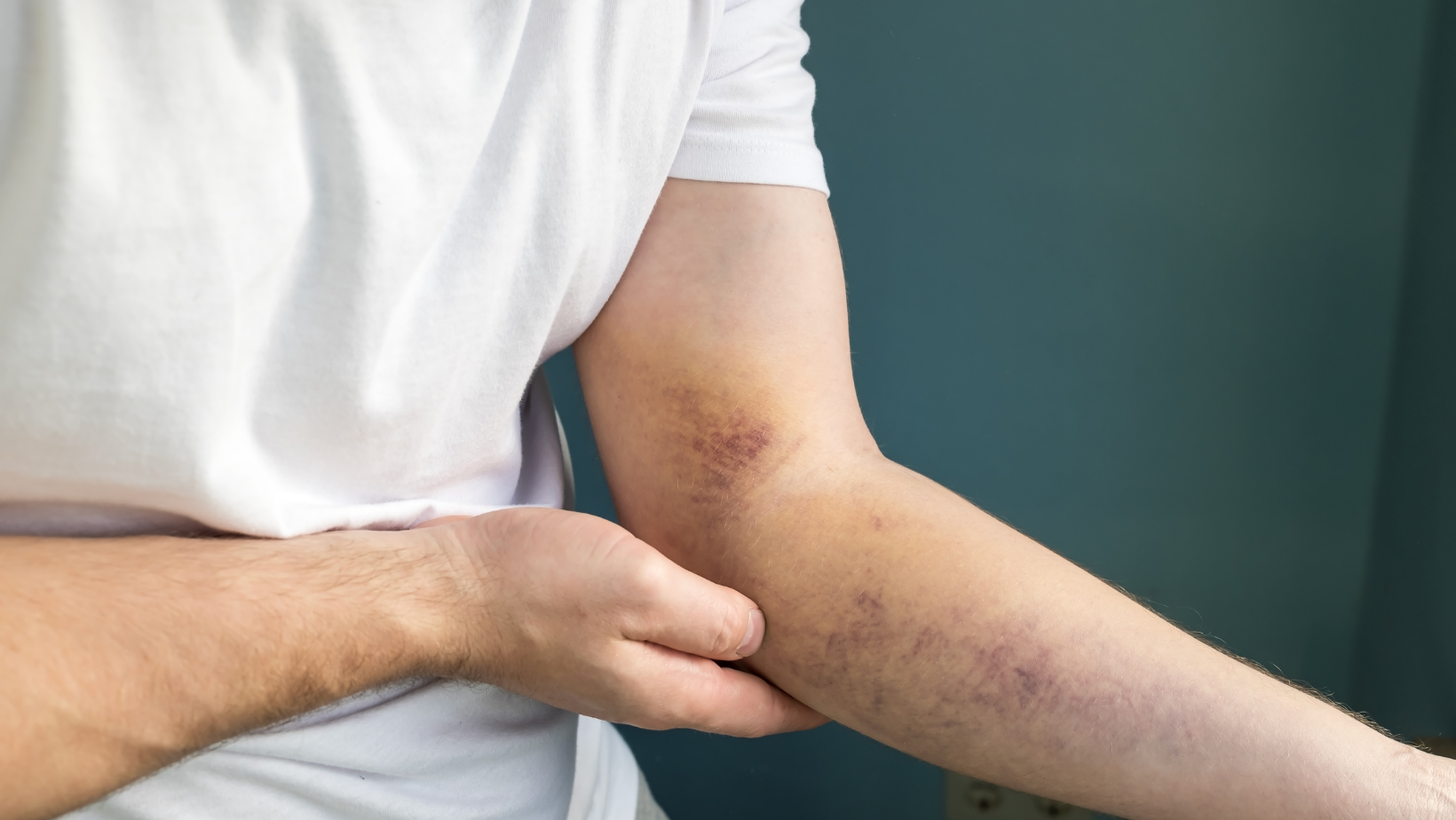Category
Bruises, also known as contusions, are a common skin injury resulting from breaking tiny blood vessels beneath the skin's surface.

Have any questions?
If you have any questions, feel free to contact us at [email protected]. A member of our support team will help you shortly.
Share this blog
Fatigue
Energy
Stress
Sleep
Bruises, also known as contusions, are a common skin injury resulting from breaking tiny blood vessels beneath the skin's surface. While bruises are generally harmless and part of the body's natural healing process, understanding their causes, adopting preventive measures, and knowing effective treatment methods is essential. This comprehensive guide will delve into the basics of bruises, exploring their causes, preventive strategies, and the most effective ways to treat them.
A bruise occurs when tiny blood vessels, known (as capillaries) break blood into the surrounding tissues. This blood pooling beneath the skin causes the characteristic discoloration associated with bruises. Bruises can vary in size, color, and severity, with colors ranging from red and purple to green and yellow as the bruise heals.
The most common cause of bruises is physical trauma or injury. Impact or pressure on the skin can damage blood vessels, leading to bruising.
Accidentally bumping into objects or banging body parts against hard surfaces can result in bruises.
Athletes may experience bruises due to collisions or impacts during games or practices, especially in contact sports.
Slips, trips, and falls can cause bruising, particularly in areas where the body touches the ground.
Certain medical conditions, such as bleeding or blood vessel disorders, can make individuals more prone to bruising.
Aging can affect the skin's elasticity and the strength of blood vessels, making older individuals more susceptible to bruising.
Some medications, including blood thinners and antiplatelet drugs, can increase the risk of bruising.
When engaging in activities with a risk of injury, such as sports, wearing protective gear like helmets, pads, and appropriate clothing can reduce the impact on the skin.
Taking precautions to prevent falls, such as removing tripping hazards and using handrails on stairs, can minimize the risk of injury.
Wearing comfortable and supportive footwear can prevent accidental tripping and reduce the likelihood of bruising on the feet.
Regular exercise and strength training can improve muscle tone and stability, reducing the risk of injuries that may lead to bruises.
Individuals on blood-thinning medications should follow their healthcare provider's recommendations and precautions to minimize the risk of excessive bruising.
Applying a cold compress or ice pack to the bruised area can help reduce swelling and constrict blood vessels, minimizing blood leakage.
Elevating the bruised area above the heart level can assist in reducing swelling and promoting efficient blood flow.
Compression or wraps on the bruised area can help control swelling and provide supportive tissues.
Arnica, a natural remedy derived from a plant, is available in cream or gel form and may help reduce bruising when applied topically.
Non-prescription pain relievers such as acetaminophen or ibuprofen can help manage pain associated with bruises. However, individuals should follow dosage guidelines and consult with healthcare providers if necessary.
Gentle massage of the bruised area can stimulate blood circulation and promote the dispersal of pooled blood, aiding in the healing process.
Protecting the bruised area from additional trauma or pressure can prevent the worsening of the injury and promote faster healing.
While most bruises heal on their own without medical intervention, individuals should seek prompt medical attention if: Bruises occur frequently without apparent cause. Bruises are unusually large or painful. Bruising is accompanied by persistent swelling or inflammation. There is a suspicion of an underlying medical condition contributing to excessive bruising.
Bruises are a standard part of injuries, often resulting from minor injuries or accidents. Understanding the causes, adopting preventive measures, and knowing how to treat bruises effectively can empower individuals to manage these common skin injuries confidently with CST cases; bruises will heal independently with time, but practicing safety and implementing appropriate treatments can expedite the healing process and alleviate associated discomfort. Remember, if there are concerns about frequent or severe bruising, seeking guidance from a healthcare professional is crucial for a comprehensive evaluation and appropriate care.